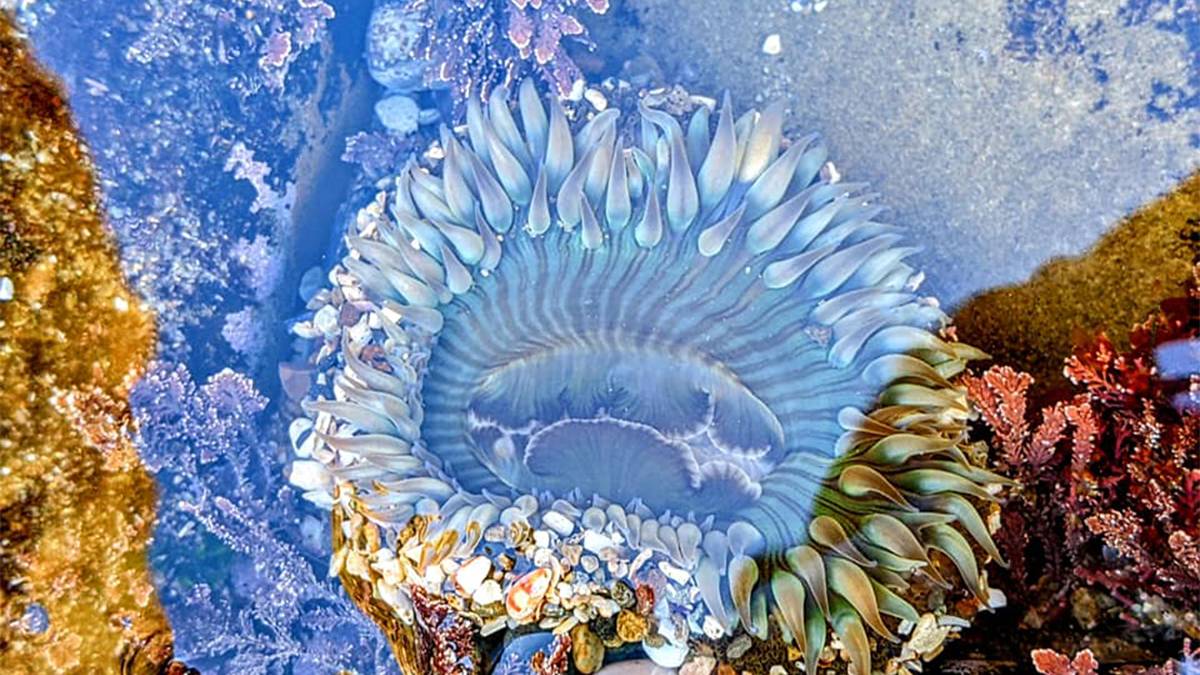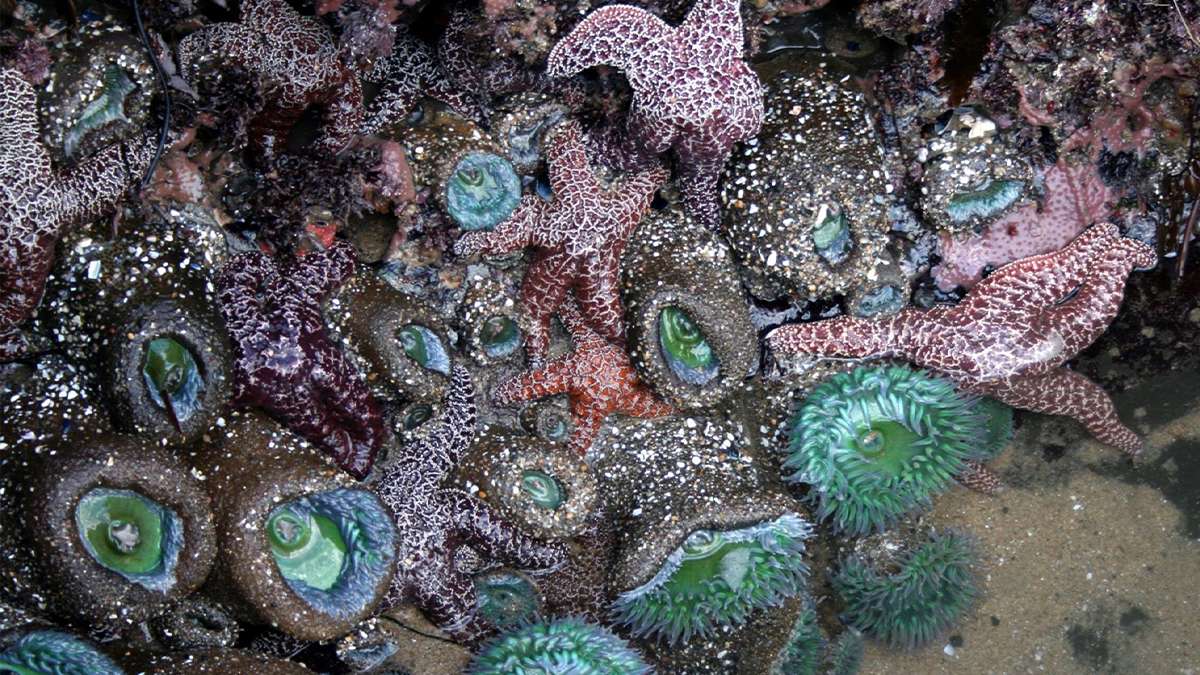Tide Pools San Francisco: 6 Best Places to Delve Into the Wonders of Sea Life

Eager to discover the hidden aquatic treasures just a stone’s throw from San Francisco? From Duxbury Reef Reserve’s marine-rich rocks to the picturesque vistas and historic lighthouses along the coast, this is your ultimate guide to the best tide pool spots, all easily accessible from San Francisco.
Looking for tide pools in San Francisco? A quick search of “best tide pools Bay area” will reveal that San Francisco itself doesn’t have a lot of tide pools within the city limits. However, the surrounding area, particularly the San Francisco Bay and the Pacific coast, is home to some of the best tide pools in California.
What are tide pools? Consider them fascinating natural aquariums left behind on rocky coastlines when the tide goes out! Here are some of the best spots to check out, all within a day’s trip distance from San Francisco.
[ez-toc]
Explore the Best Tide Pools Near San Francisco
Duxbury Reef Reserve in Bolinas: Located in Marin County, this is a must-visit for tide pool San Francisco enthusiasts, with a huge stretch of rocky reef teeming with marine life at low tide. You’ll find an abundance of sea creatures like anemones, starfish, crabs, sea urchins, and more.
You can stop by nearby Agate Beach to explore more tidepools, but if you’re going there anyway, you might as well get into some beach combing! Although it has a few tide pools, Agate Beach is primarily known for the colorful pebbles found in the sand. The kids will love searching for new additions to their pebble and sand castles.
Fitzgerald Marine Reserve in Moss Beach: This protected area is home to diverse tide pools, from the sheltered pools near the parking lot to the more exposed pools further down the beach. Look for ochre sea stars, hermit crabs, limpets, and barnacles.
Have more time to explore? Pigeon Point Light Station State Historic Park is definitely worth a visit after checking out the wonders of Fitzgerald Marine Reserve! The park’s centerpiece is the iconic 115-foot Pigeon Point Lighthouse, one of the tallest lighthouses on the West Coast.
You can admire it from below as well as the breathtaking ocean views from the top of the cliff, or stay overnight in the former lighthouse keepers’ homes, which are converted into a hostel.
Bean Hollow State Beach near Pescadero: Bean Hollow State Beach is home to two sheltered coves separated by a rocky point, each with its own unique appeal — Pebble Beach and Arroyo de los Frijoles Beach. Pebble Beach is known for its colorful pebbles and tafoni rocks, while Arroyo de los Frijoles has sheltered tide pools perfect for families.
Related Post: Things to Do with Kids in San Francisco – 17 Fun Activities to Try
Both tide pools are teeming with anemones, crabs, sea urchins, and other marine life. Fishing is permitted in designated areas of the beach, but you need a fishing license for that. Once you’ve had your fun exploring the diverse tidal pools near me, move on to land adventure2s!
Explore a one-mile self-guided nature trail between the two beaches, offering close-up views of tide pools, wildflowers, and colonies of harbor seals and shorebirds.
Fort Funston in San Francisco: Searching for “best tide pools near me” while in Golden Gate City? While not as diverse as some of the other spots on this list, Fort Funston, which is home to some of the few tide pools San Francisco has to offer, is a great option if you’re short on time or want to stay closer to the city.
It’s also an ideal location if you want to bring Fido out! Fort Funston is a popular off-leash dog park, perfect for beach walks with your furry companions.
You might find hermit crabs, shore crabs, anemones, and other critters at low tide, especially near the rocky formations south of the main beach. But to set expectations, note that the tide pools at Fort Funston are smaller and have less diverse sea life compared to dedicated tide pool reserves like Fitzgerald Marine Reserve or Duxbury Reef.
Related Post: SeaQuest Folsom – Ultimate Guide to Coupons and Reviews
Natural Bridges State Beach Santa Cruz: There aren’t a lot of San Francisco tide pools, but if you’re really determined, you can venture farther south. Natural Bridges State Beach has more tidepools near me if you look closely. It’s an ideal destination for tide pool hunters, with its natural arches and diverse tide pools that draw tidepool enthusiasts year-round.
Should you decide to make a day trip out of it, you can explore tide pools nestled within the rocky shores near the natural bridges, or venture further north towards Sand Dollar Beach for additional tidal treasures.
For more fun under the sun, you can opt to go offshore for kayaking adventures or explore the underwater world near the kelp beds with snorkeling gear! Rentals are available, so don’t worry if you didn’t bring any.
Redondo Beach in Half Moon Bay: At low tide, Redondo Beach reveals a vast and diverse tide pool reef teeming with marine life like anemones, crabs, starfish, sea urchins, and more. It’s a great option for experienced tide-poolers who enjoy exploring a larger area.
We also love that this Half Moon Bay gem is less crowded than other tide pools. Compared to popular spots like Fitzgerald Marine Reserve, Redondo Beach tends to be less crowded, offering a more peaceful tidepooling experience. Just note that since it’s located farther south of Half Moon Bay proper, Redondo Beach requires a bit of a drive to reach.
Additionally, there’s no designated path down to the beach from the parking lot. Finding suitable access points might involve some scrambling over rocks and traversing uneven terrain.

A Few Reminders for Tide Pool Enthusiasts
Whether you’re a seasoned or beginner tide pool enthusiast, here are some helpful tips to ensure a safe and enjoyable tide pooling experience:
- Check the tide tables: When tide pooling near me, this is crucial! Tide pools are only exposed at low tide, so plan your visit accordingly. Tides can change quickly, especially Bay Area tide pools, so leave yourself ample time before the tide starts returning.
- Research the area: Different tide pools offer different experiences. Some tide pools near me are better for families, while others cater to experienced explorers. Find out what kind of creatures you might see and what specific rules or regulations apply at your chosen location.
- Look, don’t touch: Observe marine life with your eyes, but never touch or disturb them. They are living creatures and can be easily harmed.
- Leave no trace: Take only pictures and memories, and leave the rocks and pools just as you found them. Avoid stepping on creatures or disrupting their habitat.
San Francisco Tide Pool FAQs
What Time is Best for Tide Pools?
The best time to explore tide pools is during low tide when the water recedes and exposes the hidden marine life. During these periods, the ocean floor becomes accessible, revealing a fascinating world of sea stars, anemones, and crabs. Always check local tide charts to find the optimal low tide times for your visit.
What to Wear to a Tide Pool?
When heading out to explore tide pools, it's smart to wear shoes with a good grip, such as tennis shoes or Tevas, to safely navigate slippery rocks. Dress in layers and bring a waterproof jacket too, so you're prepared for splashes and changing coastal weather!

San Francisco Budget-Friendly Vacation Planner
Planning a tide-pooling San Francisco trip and want to stay on budget? Check out Tripster for amazing deals on tickets, tours, and experiences that won’t break the bank. Plus, you can book your choice of San Francisco accommodation at discounted prices, especially now that there are a bunch of hotels offered at the lowest rates. It’s a great way to enjoy San Francisco without worrying about spending too much.
Plan your San Francisco vacation with Tripster today and see how much you can save!
Did We Miss Anything?
Leave us a comment below on what you think are the best tide pools San Francisco!